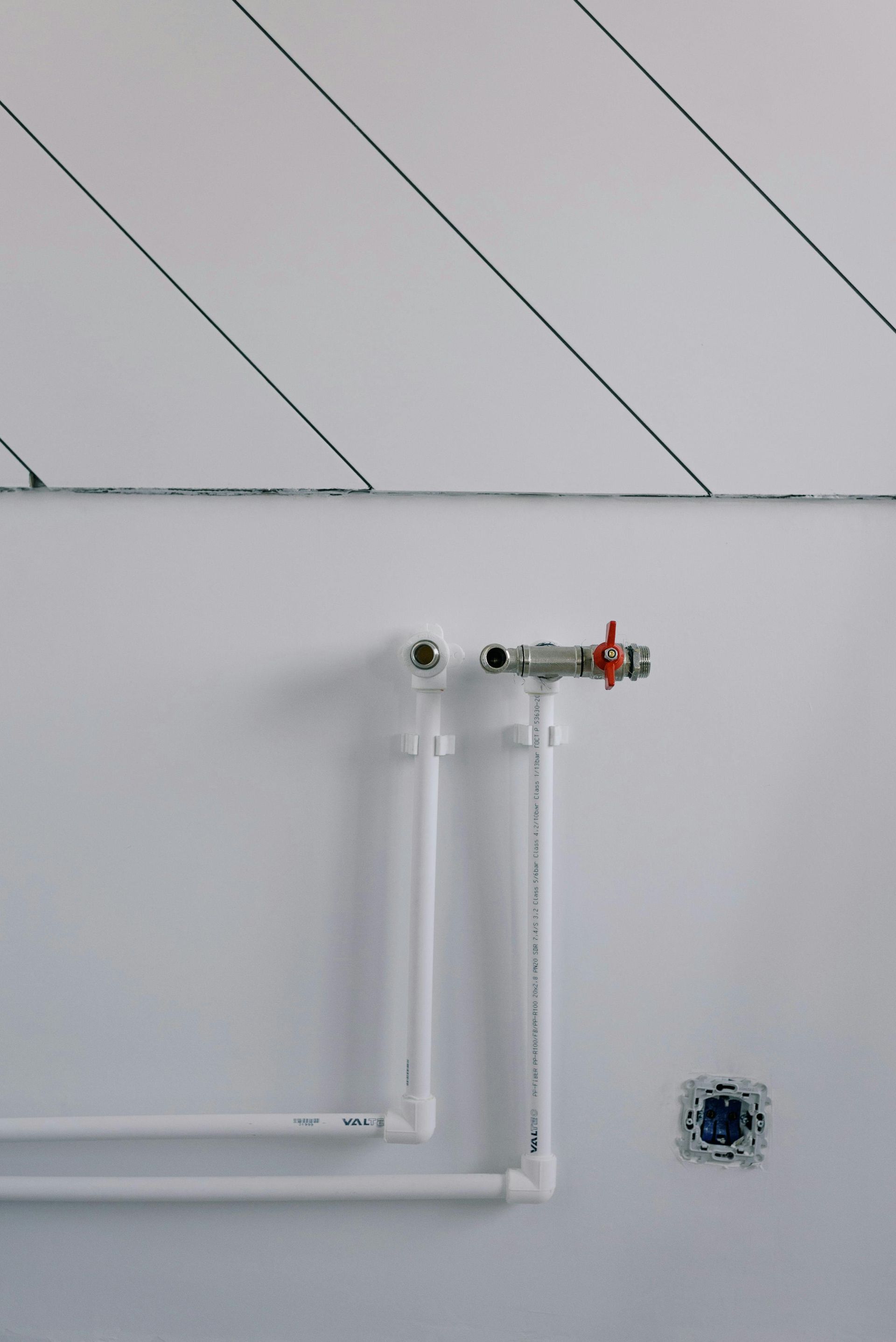Radon Mitigation Pittsburgh, Pennsylvania

What Is Radon Gas?
Radon gas is one of the most insidious of all known carcinogens. It is invisible to the naked eye, and its presence in our living environment is cumulative. Radon can become airborne on its own during construction or demolition, as well as during the maintenance of power lines, underground tanks, and storage tanks at the facility. Radon can also be released from sinks, water heaters, and furnaces that over time accumulate radon gas. The accumulation of radon increases with time; thus, the need to act quickly to contain and protect the public's health. Radon is the second leading cause of lung cancer. So, performing a Radon test is necessary.
How do radon mitigation services work?
Our radon services in Pittsburgh involves the careful inspection, sealing, and reduction of radon in your home which is a task for expert radon company in Pittsburgh like ours. Radon abatement is any measure employed to reduce the radon concentration in the living spaces of occupied buildings, as well as the soil of surrounding groundwater sources. Radon is an important contributor to indoor air pollution. Radon gas is released from soil when soil is processed; therefore, it is important to prevent the escape of radon into groundwater supplies by proper grading, septic tank maintenance, and effective soil recharge. Radon mitigation can significantly reduce the risks of lung cancer and other diseases, while at the same time reducing the health costs associated with such diseases. Radon gas is also a leading cause of breathing problems, such as cough and lung cancer, in children.
Radon Mitigation Services: Getting your Home Tested
Having your home tested for radon levels is the first step in identifying whether or not you need to perform a Radon mitigation, Pittsburgh, PA solution. Having your home tested will help you determine the level of radon in your home, and will give you a better understanding of how to protect yourself and your family from this silent, lethal killer. If you are considering purchasing a new home, the absence of Radon in your neighborhood should be of as much concern to you as the presence of Radon. Taking the steps necessary to find Radon in your home is the only way to determine if your new home is right for you. Contact us now for your needs for radon remediation Pittsburgh PA.


Contact Us
Radon Mitigation Services: Determining Radon Concentration in Your Home
The only steps you need to take to determine the Radon concentration in your home are with a professional Radon Test: : First, locate your home on a map of your neighborhood, using the details provided by your Radon Testing Lab. Second, use the picocuries per liter action level as a guide. This level is the maximum amount of Radon that will accumulate in your home, based on the Radon measurement performed in your lab. This action level is used primarily as a means of determining if you need to make any modifications to your existing home. It also serves as a baseline for evaluating the potential Radon levels in homes throughout your neighborhood.
There are several options available to you when it comes to Radon mitigation, including Synthetic Methane gas mitigation, Gasification, and Carbon Dioxide abatement. Each of these options has its pros and cons. For example, when it comes to Synthetic Methane mitigation, the biggest benefits include reducing or eliminating the need for additional construction, and extending the life of existing buildings. Carbon Dioxide abatement, on the other hand, can dramatically reduce or even eliminate your need for new construction. Both of these options, however, can be very expensive, both in terms of the cost of materials and the costs associated with their construction.
One more option to consider for Radon mitigation involves installing a passive radon control device under your foundation. A passive radon control system uses copper or other invisible gas barriers to reduce the Radon gas level in your home. These systems do not require any digging and typically do not have any significant impact on the structural integrity of your home. Typically, a passive radon control system is effective in reducing the Radon gas level in your basement and attic to less than 2 picocuries per liter. Are you looking for radon mitigation in Pittsburgh? Contact us now and we will be there to help.
How to install a Radon Mitigation System in your home?
In order to install a Radon Mitigation system in your home, it is necessary that you have a qualified and licensed contractor to complete the installation. A licensed and qualified contractor will ensure that the proper installation procedures are followed, including proper ventilation of the location of the mitigation system. The contractor will also make sure that the system is installed so that it completely covers and seals off the basement or attic from the Radon gases that may accumulate there. The Radon gas that accumulates in your basement is a serious health risk and must be mitigated. You should work with a qualified contractor who can make sure that your property meets all Health Department requirements, and that your new HVAC system is certified to protect you against Radon.
Although many older homes have already been designed with the installation of a Radon Reduction system in mind, some newer homes may not have had this procedure performed on the floor slab or foundation. As new and more modern houses are built, the homeowners are becoming increasingly aware of the health risks associated with radon gas. Contractors and foundation construction near me who specialize in Radon mitigation are happy to help the homeowner understand how to test for this silent, invisible gas, and then provide advice as to how to properly address the situation. We are those Pittsburgh radon company and contractors who promise to give you the cheapest offerings for radon mitigation cost in Pittsburgh.
Can You Install a Radon Mitigation System in Your Home as a DIY Project?
Homeowners often wonder if they can tackle radon mitigation as a DIY project.
The short answer is yes, you can install it in your home as a DIY project, but it comes with some caveats. Let's explore the pros and cons of taking on this task yourself.
Pros of DIY Radon Mitigation:
- Cost Savings: One of the most significant advantages of a DIY radon mitigation installation is cost savings. Hiring professionals for radon services can be expensive, and doing it yourself can significantly reduce the overall expenses.
- Control and Customization: When you install a radon mitigation system yourself, you have full control over the process and can customize it to fit your home's specific needs. This flexibility can be valuable in homes with unique layouts or construction.
- Learning Opportunity: Installing a radon remediation system can be a valuable learning experience. You can gain knowledge about radon and how to reduce its levels, which can be useful for future maintenance and understanding the importance of radon testing.
- Immediate Action: If you've tested your home for radon and discovered high levels, taking immediate action is essential. DIY installation allows you to address the issue promptly without waiting for professional radon services.
Cons of DIY Radon Mitigation:
- Complexity: Radon mitigation systems can be complex, involving drilling, sealing, and installing various components like fans and pipes. Without the necessary skills and experience, it's easy to make mistakes that could render the system ineffective.
- Safety Concerns: Radon gas is radioactive, and improper handling during DIY installation can pose health risks. It's crucial to follow safety guidelines and wear protective gear when working with radon mitigation systems.
- Potential for Mistakes: Mistakes in the installation process can lead to a system that doesn't effectively reduce radon levels. This can result in a false sense of security and continued exposure to harmful levels of radon. Maybe you might not be able to get into crawl spaces to eliminate it completely.
- Warranty Issues: Some professional radon services provide warranties for their installations. If you install a mitigation system yourself, you may miss out on these warranties, which can be valuable for long-term peace of mind.
Tips for DIY Radon Mitigation:
If you decide to install a radon mitigation system yourself, here are some essential tips to follow:
- Educate Yourself: Thoroughly research radon mitigation techniques and understand the principles behind them. Become one of the home radon pros before you continue
- Follow Guidelines: Adhere to radon mitigation guidelines provided by organizations like the Environmental Protection Agency (EPA).
- Safety First: Use appropriate safety gear, such as gloves and masks, and take precautions to minimize radon exposure.
- Test and Monitor: After installation, regularly test and monitor radon levels to ensure that the system is effectively reducing them.
- Consider Professional Help: If you're uncomfortable with any aspect of the installation or have doubts about its effectiveness, consult with a professional radon service.
In conclusion, while it is possible to install a radon mitigation system in your home as a DIY project, it's essential to weigh the pros and cons carefully.
Radon is a serious health risk, and any mistakes in the installation process can have severe consequences. If you're not confident in your DIY skills or have concerns about safety, it's advisable to seek professional radon services to ensure the job is done correctly and effectively, ultimately safeguarding your family's health and avoiding the danger of radon. We Proud ourselves in being the best home radon pro Western Pennsylvania. So, if you are not into DIY, why not give us a call for your installing your radon mitigation system Pittsburgh PA. You can also read our blog for more help! For Foundation Repair Services Guide, check this article out. For checking out the radon mitigation costs, check this out.
Frequently Asked Questions
What is radon, and why is mitigation important?
Radon is a radioactive gas that can seep into homes from the ground, posing health risks such as lung cancer. Mitigation reduces radon levels to safe limits.
Does basement waterproofing help with radon mitigation?
While basement waterproofing doesn’t eliminate radon, sealing cracks and installing a radon mitigation system can reduce radon entry into your home.
What is the cost of radon mitigation?
Radon mitigation systems typically cost between $800 and $1,500, depending on the size of your home and the system’s complexity.
How do radon mitigation systems work?
Radon mitigation systems use a vent pipe and fan to draw radon gas from beneath your home and safely vent it outside, keeping indoor levels low.
How do I know if I need radon mitigation?
If a radon test reveals levels higher than 4 pCi/L, you should install a radon mitigation system to protect your family’s health.


